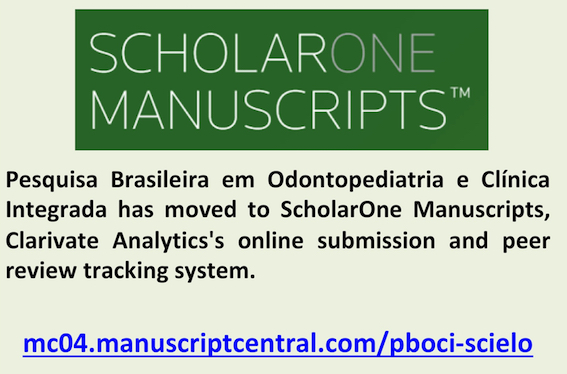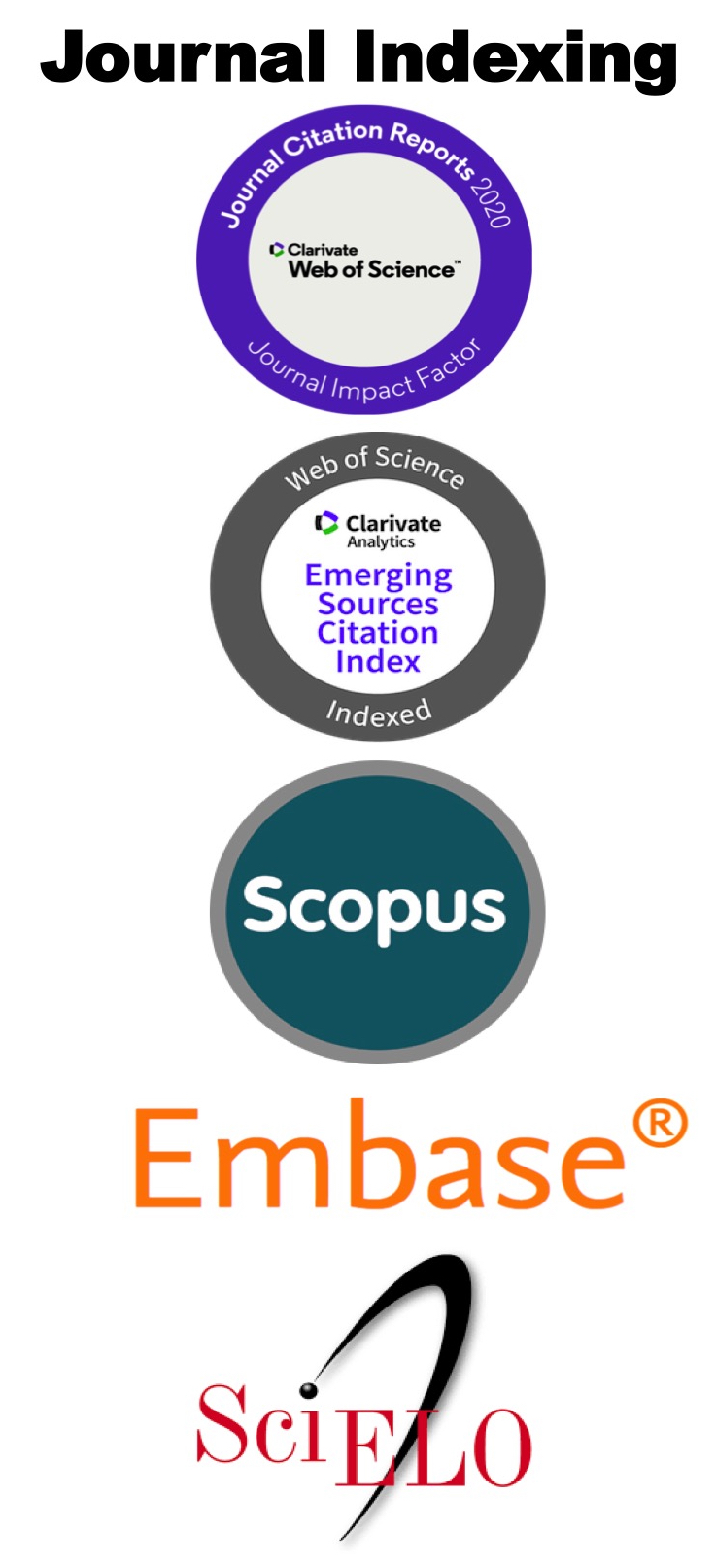Comparison of Novel Bioactive Materials in Indirect Pulp Therapy in Deciduous Teeth: An in Vivo Study
Keywords:
Endodontics, Dental Pulp Capping, Child, Tooth, DeciduousAbstract
Objective: To assess the clinical success of Biodentine, NeoPutty, and calcium hydroxide as pulp capping materials for indirect pulp capping in carious primary teeth. Material and Methods: Indirect pulp treatment was performed on 36 deciduous molars in patients with deep carious lesions. The teeth were randomly assigned to three groups (n=12): Biodentine, NeoPutty, and calcium hydroxide. Statistical analysis was conducted using SPSS software version 21.0. Pearson's Chi-square test was employed to compare success and failure rates of the materials at three different time intervals (30, 90, and 180 days) and overall success and failure rates regardless of the time intervals. Results: Different pulp capping materials yielded varying success rates. The NeoPutty demonstrated a success rate of 91.67%, the Biodentine 83.33%, and the calcium hydroxide 58.33% after 6 months. However, these differences were not statistically significant (p>0.05). Conclusion: Indirect pulp treatment with calcium silicate-based materials, such as Biodentine and NeoPutty, showed superior results compared to calcium hydroxide. Although differences in success rates were observed among the materials, they did not reach statistical significance.
References
Schwendicke F, Frencken JE, Bjørndal L, Maltz M, Manton DJ, Ricketts D, et al. Managing carious lesions: Consensus recommendations on carious tissue removal. Adv Dent Res 2016; 28(2):58-67. https://doi.org/10.1177/0022034516639271
Bjørndal L, Simon S, Tomson PL, Duncan HF. Management of deep caries and the exposed pulp. Int Endod J 2019; 52(7):949-973. https://doi.org/10.1111/iej.13128
Tan SY, Yu VSH, Lim KC, Tan BCK, Neo CLJ, Shen L, et al. Long-term pulpal and restorative outcomes of pulpotomy in mature permanent teeth. J Endod 2020; 46(3):383-390. https://doi.org/10.1016/j.joen.2019.11.009
Monea M, Mihai P, Stoica A, Teodore S. Histologic evaluation of tertiary dentine after indirect pulp capping procedures. Key Eng Mater 2016; 695:260-263. https://doi.org/10.4028/www.scientific.net/kem.695.260
Seale N, Coll J. Vital pulp therapy for primary dentition. Gen Dent 2010; 58(03):194-200.
Chauhan A, Dua P, Saini S, Mangla R, Butail A, Ahluwalia S. In vivo outcomes of indirect pulp treatment in primary posterior teeth: 6 months' follow-up. Contemp Clin Dent 2018; 9(Suppl 1):S69-S73. https://doi.org/10.4103/ccd.ccd_48_18
Julious SA, Zariffa N. The ABC of pharmaceutical trial design: Some basic principles. Pharm Stat 2002; 1(1):45-53. https://doi.org/10.1002/pst.6
Hilton TJ. Keys to clinical success with pulp capping: A review of the literature. Oper Dent 2009; 34:615-625. https://doi.org/10.2341/09-132-0
Elchaghaby MA, Moheb DM, El Shahawy OI, Abd Alsamad AM, Rashed MAM. Clinical and radiographic evaluation of indirect pulp treatment of young permanent molars using photo-activated oral disinfection versus calcium hydroxide: a randomized controlled pilot trial. BDJ Open 2020; 6:4. https://doi.org/10.1038/s41405-020-0030-z
Parirokh M, Torabinejad M. Mineral trioxide aggregate: A comprehensive literature review – Part I: Chemical, physical, and antibacterial properties. J Endod 2010; 36:16-27. https://doi.org/10.1016/j.joen.2009.09.006
Lee SJ, Monsef M, Torabinejad M. Sealing ability of a mineral trioxide aggregate for repair of lateral root perforations. J Endod 1993; 19:541-544. https://doi.org/10.1016/S0099-2399(06) 81282-3
Pushpalatha C, Dhareshwar V, Sowmya SV, Augustine D, Vinothkumar TS, Renugalakshmi A, et al. Modified Mineral Trioxide Aggregate - A versatile dental material: An insight on applications and newer advancements. Front Bioeng Biotechnol 2022; 10:941826. https://doi.org/10.3389/fbioe.2022.941826
Alqahtani AS, Alsuhaibani NN, Sulimany AM, Bawazir OA. NeoPutty versus NeoMTA 2 as a pulpotomy medicament for primary molars: A randomized clinical trial. Pediatr Dent 2023; 45(3):240-244.
Aeinehchi M, Eslami B, Ghanbariha M, Saffar AS. Mineral trioxide aggregate (MTA) and calcium hydroxide as pulp-capping agents in human teeth: A preliminary report. Int Endod J 2003; 36:225-231. https://doi.org/10.1046/j.1365-2591.2003.00652.x
Selvendran KE, Ahamed AS, Krishnamurthy M, Kumar VN, Raju VG. Comparison of three different materials used for indirect pulp capping in permanent molars: An in vivo study. J Conserv Dent 2022; 25(1):68-71.
Gandolfi MG, Siboni F, Botero T, Bossù M, Riccitiello F, Prati C. Calcium silicate and calcium hydroxide materials for pulp capping: biointeractivity, porosity, solubility and bioactivity of current formulations. J Appl Biomater Funct Mater 2015; 13(1):43-60. https://doi.org/10.5301/jabfm.5000201
Kaup M, Dammann CH, Schäfer E, Dammaschke T. Shear bond strength of Biodentine, ProRoot MTA, glass ionomer cement and composite resin on human dentine ex vivo. Head Face Med 2015; 11:14. https://doi.org/10.1186/s13005-015-0071-z
Malkondu Ö, Karapinar Kazandağ M, Kazazoğlu E. A review on biodentine, a contemporary dentine replacement and repair material. Biomed Res Int 2014; 2014:160951. https://doi.org/10.1155/2014/160951
Saber AM, El Meligy OA, Alaki SM. Recent advances in indirect pulp treatment materials for primary teeth: A literature review. Int J Clin Pediatr Dent 2021; 14(6):795-801. https://doi.org/10.5005/jp-journals-10005-2073
Kunert M, Lukomska-Szymanska M. Bio-inductive materials in direct and indirect pulp capping - A review article. Materials 2020; 13(5):1204. https://doi.org/10.3390/ma13051204
Downloads
Published
How to Cite
Issue
Section
License
Copyright (c) 2024 Pesquisa Brasileira em Odontopediatria e Clínica Integrada

This work is licensed under a Creative Commons Attribution-NonCommercial 4.0 International License.



